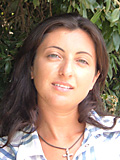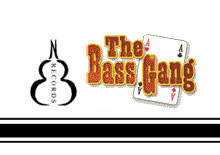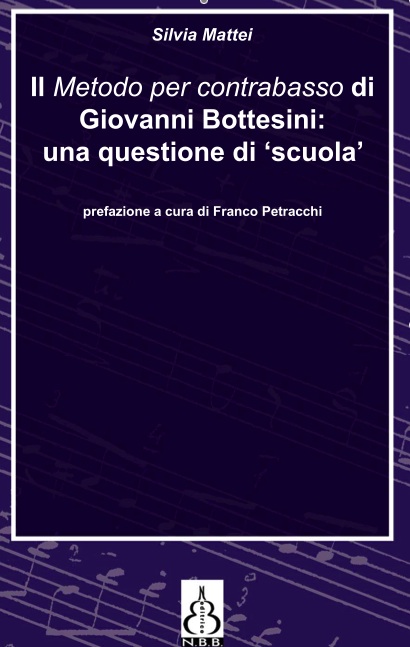A mattter of "school"
 This article has two purposes. On one side, it deals with an issue widely discussed in the world of both double bass and musicology. On the other hand, it wants to be an encouragement to read my new book: The Double-Bass Method by Giovanni Bottesini – a matter of “school”. This article has two purposes. On one side, it deals with an issue widely discussed in the world of both double bass and musicology. On the other hand, it wants to be an encouragement to read my new book: The Double-Bass Method by Giovanni Bottesini – a matter of “school”.
This study was actually born during the research I carried out for my final dissertation. In it, the often misused idea of “school” for the first time ever comes into contact with realities linked to geographical frameworks and, above all, with printed teaching methods. This kind of relationship has often been discussed without proper awareness while the connection between methods and schools has never been deeply researched in the double bass world. In spite of the title, this book is does not only focus on the Method for the double bass, written by this great musician. Nevertheless, due to the need to place this book on a geographical and time framework, by also providing editorial and teaching reasons, it inevitably also needs to deal with contemporary teaching methods, explained through the historical and detailed analysis of the environment of the double bass in the 19-century-Italy.
The question is: in the beginning was… the Method?
The profile of Giovanni Bottesini has already been widely studied, therefore, in my book I chose not to include an analysis of this aspect. Nevertheless, when reflecting a bit more about it, we realize that there is another aspect, which has never “formally” been considered, with the unique exception of Thomas Martin’s speech on “professor” Bottesini during the conference commemorating the centenary of the death of the great musician, held in Parma in 1989. As a matter of fact, before analyzing his method, we should go back to the “student” Bottesini.
The image of the “teacher” has never been linked to the “virtuoso” musician and, in fact, he never worked as a teacher during his career (as for the official documents, there are no names of students linked to ‘maestro’ Bottesini). This is an important aspect for whoever has to study a teaching book of an instrument, especially from those years. As a matter of fact, in Bottesini’s time, professors used to write teaching methods (sometimes exclusively) for their students, in order to offer them a written text that included the contents of the lessons and specific exercises to reach specific objectives. This was due to the teacher’s own will or, frequently, due to the Conservatoire’s internal rules, where these teachers used to work. If Bottesini wrote his method in a moment in which this was the “rule” (and we consider his method as one of the five best teaching methods in the double bass history), we understand that the reason for him writing it should be found somewhere else.
The reasons underlying the writing of this method lead to a great discover – a new “school” - that could become fundamental in tracing back the roots of a “modern double bass practice”.
Bottesini always refused to write a teaching method in order to preserve his image, because he was a great conductor and wanted to be remembered as such, while writing methods was a task “just” for teachers. It was Tito Ricordi that insisted in persuading him to publish a teaching method. He aimed at competing against the contemporary method for orchestra double bass written by Luigi Rossi and Giorgio Anglois, who worked as a double bass players at the court of the Italian King Vittorio Emanuele (who was a great rival of the “double-bass tamer”). That method marked a new era in the field of publishing teaching books for double bass.
The background behind the birth of the Bottesini’s Method is not supposed to diminish the value of this work, which we do consider important when studying the well-known “Milanese school”. The true “value” of the method, nevertheless, emerges when compared with its contemporary teaching literature, that is to say, every element should be analyzed, beyond its content, also from the formal point of view in comparison with other important methods, such as the previously mentioned Rossi-Anglois, which represented a “new school” and the “new way of fingering”, according to the method of Bonifazio Asioli.
Among the all mentioned methods, this is definitely the most interesting. Asioli, although he could not play the double bass, offers such a modern technique for his time that it was never considered as viable and received criticisms. Nowadays, the elements for a new way of fingering by Bonifazio Asioli are the basis of the modern double bass “school”. By analyzing the first double bass method that appeared in Italy, we are able to discover the real pioneer of the “new way of fingering”.
Through the study and analysis of these important “treaties”, we can trace all the elements linked to the reality of the schools in Italy during the first half of the 19 century. It is covered in the central part of the book, which still is modern and deals with the concept of “school”.
The fact that every “method” contains within it the sign of a specific “school”, representing ideally and symbolically the author’s lessons with his students, should become a clear concept and a constant thought in each good musician’s mind. What the teacher is transmitting is the fruit of what he, in turn, has learnt from his teacher, by filtering, elaborating and resulting in the same practice. If we identify this oral process between teacher and student with the concept of “school” and accept the concept of “method” as the transcription of an instrumental practise, then we are able to trace back the sign of a specific school in every “teaching method”.
This is the importance of the issues mainly concerning the fingerings, the bowings written by our teacher to be faithfully followed (at least, as a student), how to grasp the bow, the position and all the specific and indicative elements of different schools.
Consequently, it is important to know the old schools, old instrumental practices and fingering systems, through the analysis of the old but, strangely enough, modern and effective methods for double bass.
Silvia Mattei
|




 This article has two purposes. On one side, it deals with an issue widely discussed in the world of both double bass and musicology. On the other hand, it wants to be an encouragement to read my new book: The Double-Bass Method by Giovanni Bottesini – a matter of “school”.
This article has two purposes. On one side, it deals with an issue widely discussed in the world of both double bass and musicology. On the other hand, it wants to be an encouragement to read my new book: The Double-Bass Method by Giovanni Bottesini – a matter of “school”. 